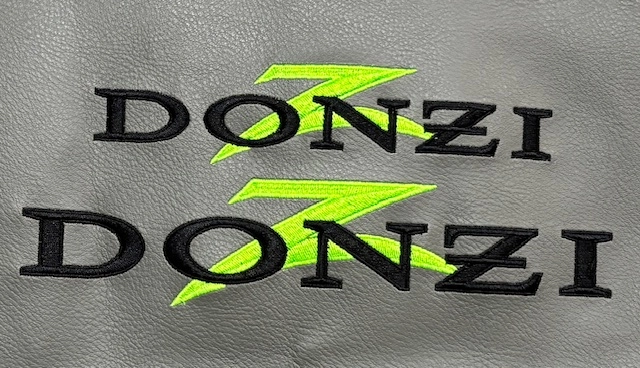Customized Mugs with Custom-made Embroidery Layouts for an One-of-a-kind Gift
Customized Mugs with Custom-made Embroidery Layouts for an One-of-a-kind Gift
Blog Article
The Art of Custom-made Embroidery: Unlocking the Keys to Creating Unique and Unforgettable Layouts
The tricks to developing custom-made embroidery styles that astound the eye and leave an enduring impression lie in a fragile equilibrium of technique, imagination, and interest to information. As we dive into the world of custom needlework, we discover the nuanced interplay in between thread choice, stitch intricacy, and style customization that elevates a simple garment to a work of art.
Selecting the Right Embroidery Threads
When selecting needlework strings, what key elements should you consider to make sure the very best results for your customized designs? The selection of embroidery thread is critical in determining the last end result of your stitched layout. Among the primary considerations is the material of the string. Various materials such as cotton, polyester, rayon, and silk provide varying levels of sheen, toughness, and structure. It is necessary to select a string material that matches the material you are stitching on and lines up with the wanted look of the design.
Thicker threads can add dimension and texture to your design, while finer strings are optimal for elaborate information and small message. Furthermore, taking into consideration the color fastness and washability of the string is essential to guarantee that your custom-made styles keep their quality and vibrancy over time.
Exploring Various Stitch Techniques
To look into the realm of 'Checking out Different Stitch Strategies', one have to comprehend the complexities and nuances that each sewing technique gives the art of needlework. Different stitch methods not only include aesthetic rate of interest but likewise add to the overall structure and measurement of the design. One prominent stitch strategy is the satin stitch, which entails carefully packed parallel stitches to produce a smooth and glossy surface, perfect for completing shapes and developing bold describes.
On the various other hand, the backstitch is a functional strategy typically made use of for detailing and including great details. It involves stitching backward to develop a strong line of needlework. Furthermore, the French knot stitch includes a responsive element to designs, excellent for creating textured accents like blossom facilities or ornamental touches.
Exploring different stitch techniques allows embroiderers to play with light, shadow, and deepness within their styles, raising the aesthetic charm and creative high quality of their embroidery projects. By grasping different stitching techniques, one can open limitless possibilities for creating unique and remarkable customized embroidery pieces.
Incorporating Personalized Design Elements
Having discovered the ins and outs of different stitch techniques such as the satin stitch, backstitch, and French knot, the focus now moves in the direction of including personalized layout components in custom-made needlework projects. Personalized style aspects play a critical duty in making needlework tasks genuinely special and unforgettable. One way to incorporate customization is by including initials, names, or substantial days to the layout. This not just adds an individualized touch however also boosts the nostalgic value of the embroidery piece.
Another way to include customized design components is by including icons or concepts that hold special significance to the recipient or reflect their rate of interests and personality. As an example, integrating a favored blossom, animal, or hobby-related sign can make the needlework style much more purposeful and customized. Furthermore, picking colors that resonate with the recipient or straighten with the desired style can even more improve the personalization click for source of the needlework task.
Mastering the Art of Shade Sychronisation
One secret aspect of color coordination is recognizing color theory. This consists of knowing just how different shades communicate with each various other, the feelings they convey, and exactly how they can be incorporated to create aesthetically appealing styles. By using color theory concepts, embroiderers can develop harmonious shade palettes that improve the total look of the design.
Furthermore, focusing on contrast is crucial in color sychronisation. Making use of contrasting colors can help certain aspects of the design pop, enhance clarity, and develop an aesthetically dynamic embroidery piece. By grasping the art of shade coordination, embroiderers can raise their styles and develop unforgettable items that reverberate with customers and customers alike.
Enhancing Appearance With Advanced Needlework Stitches

Bullion knots, on the other hand, can be utilized to create twisted, ropelike aspects that include a lavish feeling to the needlework. Experimenting with these innovative needlework stitches enables you to push the borders of typical embroidery and create truly unique and visually appealing appearances in your styles.
Verdict
To conclude, the art of personalized needlework includes a combination of picking the best threads, checking out various stitch strategies, including personalized layout aspects, mastering shade sychronisation, and enhancing appearance with sophisticated stitches. By understanding and applying these crucial elements, embroiderers can produce unique and memorable layouts that showcase their creative thinking and ability. Embroidery fanatics can unlock the keys to creating gorgeous and custom pieces that stick out and leave a lasting perception.
Report this page